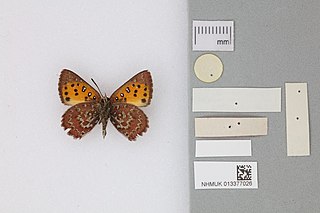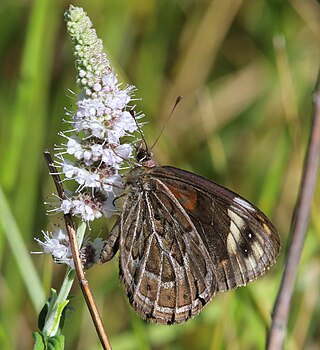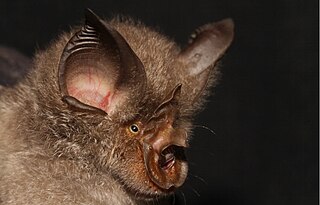
Tzaneen is a large tropical garden town situated in the Mopani District Municipality of the Limpopo province in South Africa. It is situated in a high rainfall fertile region with tropical and subtropical agriculture taking place in a 20,000 square kilometres (7,700 sq mi) region. It is Limpopo's second largest town after Polokwane.
Dingane ka Senzangakhona Zulu, commonly referred to as Dingane or Dingaan, was a Zulu chief who became king of the Zulu Kingdom in 1828.

Aloeides rossouwi, the Rossouw's copper, is a species of butterfly in the family Lycaenidae. It is endemic to South Africa, where it is found in Mpumalanga south of the Stoffberg.
Lepidochrysops lotana, the Lotana blue, is a species of butterfly in the family Lycaenidae. It is endemic to South Africa.

Dingana is a butterfly genus from the subfamily Satyrinae in the family Nymphalidae.

Torynesis is a genus of butterflies from the subfamily Satyrinae in the family Nymphalidae. It comprises five species from South Africa and Lesotho. It is one of the genera in the tribe Dirini Verity, 1953; other genera of this tribe that are found in the Afrotropical Region are Paralethe, Aeropetes, Tarsocera, Dira, Serradinga and Dingana.
Dingana dingana, or Dingaan's widow, is a butterfly of the family Nymphalidae. It is found in the KwaZulu-Natal midfields from the Drakensberg foothills to the Mooi River.
Dingana angusta, the narrow-banded widow, is a butterfly of the family Nymphalidae. It is found in grasslands the eastern highlands from northern Eswatini to Mpumalanga and the Limpopo Province.
Dingana jerinae, or Jerine's widow, is a butterfly of the family Nymphalidae. It is only known from the upper southern scree slopes of the Kransberg in Limpopo, South Africa.
Dingana alticola, the red-banded widow, is a butterfly of the family Nymphalidae. It is only known from high altitude grassland in the Steenkampsberg area in the Mpumalanga province.

Dingana alaedeus, the Wakkerstroom widow, is a butterfly of the family Nymphalidae. It is only known from high altitude grassland at about 2,000 meters. It has a short flying period in summer. The specific name means “god of the wing” in Latin.
Dingana bowkeri, or Bowker's widow, is a butterfly of the family Nymphalidae. It is found in Lesotho, South Africa, in the Eastern Cape and Richmond and Cradock in the Cape Province.
Dingana clarki, or Clark's widow, is a butterfly of the family Nymphalidae. It is found in South Africa.
Dingana kammanassiensis, the Kammanassie widow, is a butterfly of the family Nymphalidae. It is only known from the slopes of the Kammanassie massif near Uniondale in South Africa.
Lepidochrysops tantalus, the king blue, is a butterfly of the family Lycaenidae found in South Africa.
Lepidochrysops glauca, the Rossouw's blue, is a butterfly of the family Lycaenidae. It is found in South Africa, where it is restricted to grassy escarpments near the Stoffberg, Dullstroom and Lydenburg in Mpumalanga.

The Wolkberg is a mountain range in Tzaneen, Limpopo Province, South Africa. It is a northern termination and a subrange of the Drakensberg mountain range which lines up from Eastern Cape, Lesotho, Kwazulu Natal and Mpumalanga. At 2200 m (7200 ft) above sea level, it is the highest mountain range in Limpopo, together with the Iron crown mountain. Its Meteorological significance is that it brings along cold fronts and is a source of cold winters throughout the Limpopo province, the cold front gets transferred from greater Drakensberg mountains in Kwazulu Natal all the way to the Wolkberg. Without the Wolkberg, Limpopo will not experience cold winters at all. The range extends for about 30 km (19 mi) in a NW/SE direction north of Sekhukhuneland. The nearest towns are Haenertsburg and Tzaneen.

7 Light Anti-Aircraft Regiment is a reserve force regiment of the South African Army Air Defence Artillery Formation.

Smithers's horseshoe bat is a species of horseshoe bat found in South Africa and Zimbabwe. It was described as a new species in 2012.







